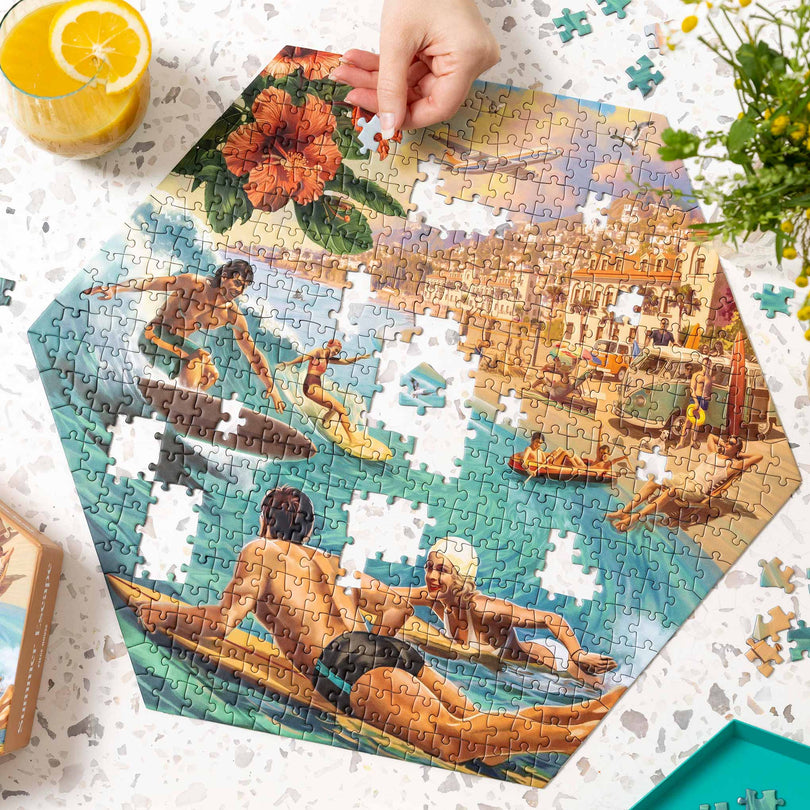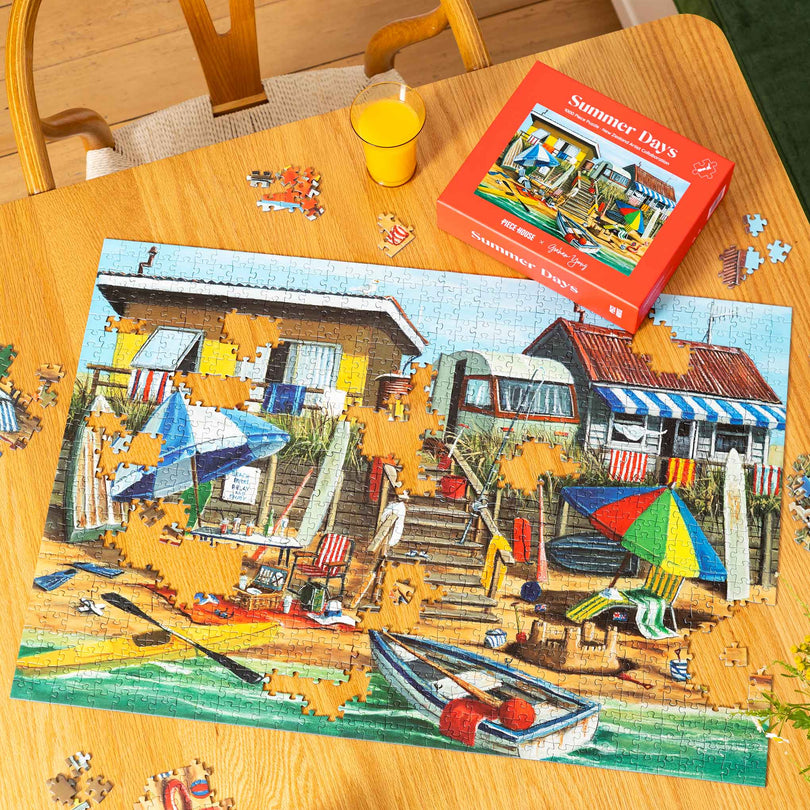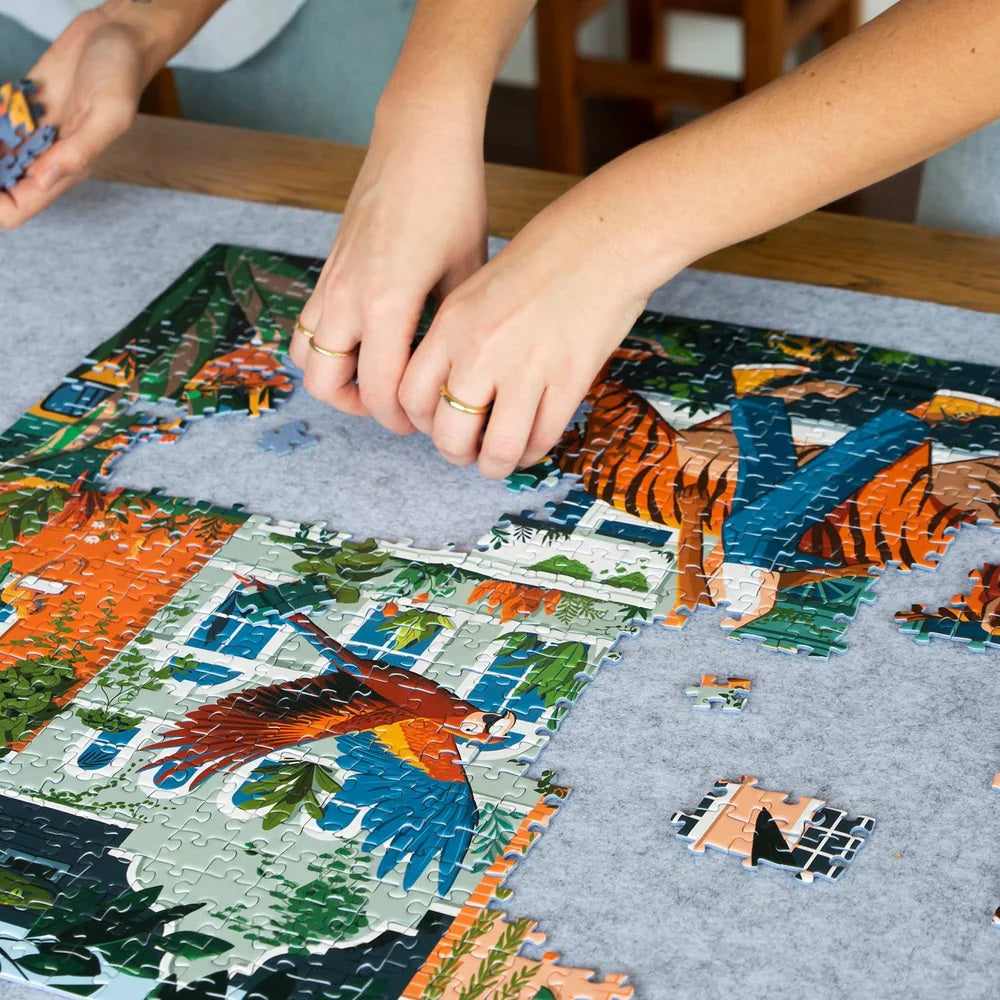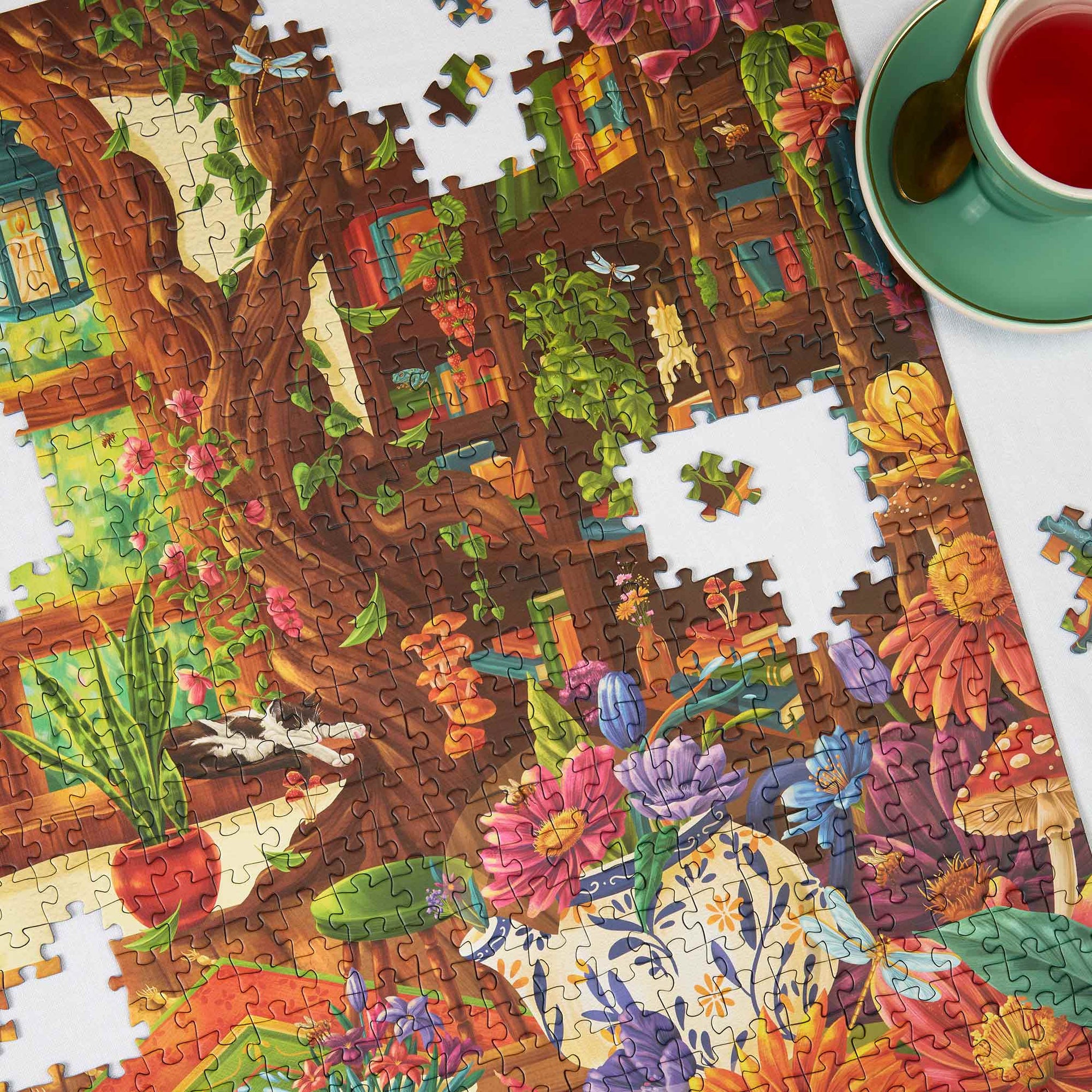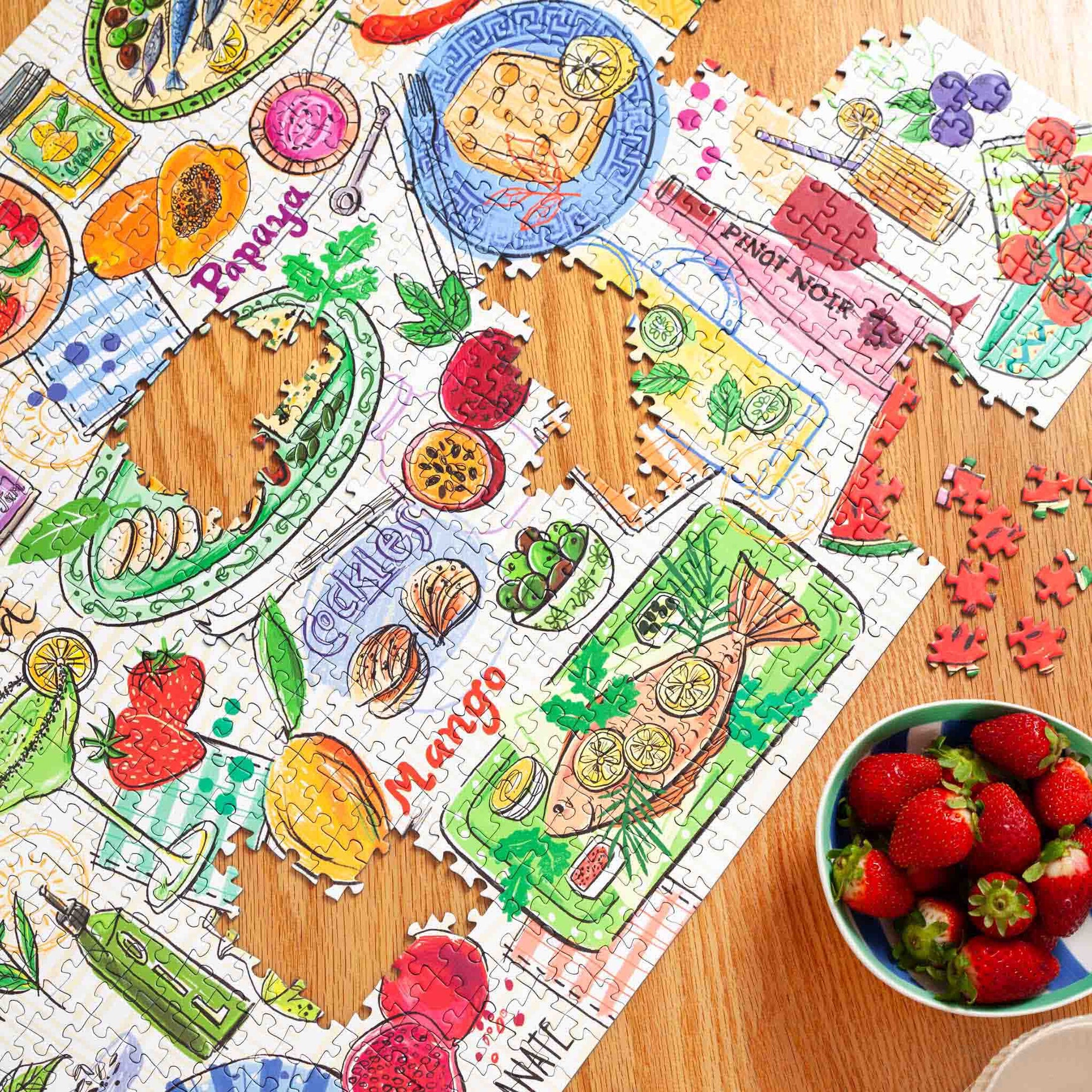Completing a 1000-piece jigsaw puzzle is rewarding. It boosts mental well-being and makes leisure time meaningful. Our company creates premium puzzles that improve well-being and showcase quality.
The time it takes to complete a 1000-piece puzzle varies considerably. It depends on your experience and the complexity of the puzzle.
We’ll look at what affects the average time to complete a 1000-piece puzzle. We’ll dive into the world of jigsaw puzzles and discover why they are so loved as a hobby.
The Average Time to Complete a 1000-Piece Puzzle
Starting a 1000-piece puzzle can be a big challenge. It takes a lot of time and brainpower. Knowing how long it takes can help you plan.
Beginner Times: What to Expect
Beginners might find a 1000-piece puzzle very difficult. They usually take 10 to 14 hours to finish. This slower pace allows them to enjoy the puzzle without stress.
Expert Puzzlers and Speed Records
Experts, however, can solve it much faster. Some can complete it in under 3 hours. Companies like Ravensburger celebrate these fast times, showing the competitive side of the puzzle community.
Studies on Cognitive Processing and Puzzling
Research shows that puzzles can sharpen your brain. They help with memory and thinking. So, solving a 1000-piece puzzle is good for your mind, whatever your age.
Factors That Affect How Long a 1000-Piece Puzzle Takes
How long it takes to complete a 1000-piece puzzle depends on several factors. These include the puzzle’s complexity and where you work on it.
The way the puzzle is cut can make a big difference. Puzzles cut in a ribbon style, like those from Buffalo Games, are often easier because their pieces fit together more predictably.
On the other hand, puzzles cut randomly are harder. They have pieces that don’t fit together as easily, taking more time and effort to solve.
Image Complexity: Gradients vs Distinct Sections
The image on the puzzle also matters greatly. Puzzles with clear sections or boundaries are easier because you can focus on one area at a time.
Images with gradients or complex patterns are harder because the pieces are often very similar.
Creating an Optimal Puzzle Workspace
A good workspace is key to solving puzzles quickly. A clean, well-lit area dedicated to the puzzle helps a lot.
Using a puzzle mat or a large, flat surface is a good idea. This keeps the puzzle organised and safe from being disturbed.
The Impact of Interruptions on Completion Time
Breaks and distractions can really slow you down. They make it hard to keep going and can cause you to lose focus.
Try to set aside time just for working on the puzzle. This way, you’re less likely to be interrupted.
Knowing these things can help you plan better. It allows you to enjoy the puzzle more and finish it faster.
How Long Should a 1000-Piece Puzzle Take?
The time it takes to complete a 1000-piece puzzle varies greatly. This depends on the person’s experience and how often they puzzle.
First-Time Puzzlers: Setting Expectations
For first-time puzzlers, a 1000-piece puzzle can seem enormous. It’s best to set aside plenty of time. It might take days or even weeks to finish.
Competitive Puzzling Timeframes
In competitive puzzling, time is key. Top puzzlers can finish a 1000-piece puzzle in under 5 hours. Others might take much longer.
Completing a 1000-piece puzzle is a personal journey. We encourage puzzlers to enjoy the process, however long it takes.
Breaking Down the Puzzle Process: Time Estimates for Each Stage
Breaking down a 1000-piece puzzle into stages is essential. It helps you plan your time better and enjoy the puzzle more. Knowing each stage helps you avoid feeling overwhelmed.
Edge Assembly Techniques and Timeframes
After sorting, we move to edge assembly — building the puzzle’s frame. Sorting edge pieces by colour and shape helps speed this up. Edge assembly usually takes 45 minutes to an hour and a half, depending on the puzzle’s complexity.
Working on unique features first can make the puzzle easier. These features, such as patterns or characters, give a sense of progress. This stage varies but usually takes about an hour.
Managing Large Block Colour Areas
Large areas of a single colour can be challenging because of many similar pieces. Breaking these areas into smaller sections or focusing on colour differences helps. Managing these can take 45 minutes to several hours, depending on the area’s size and your experience.
By understanding and managing each puzzle stage well, we can complete a 1000-piece puzzle at our own pace. This way, we can enjoy the puzzle without feeling rushed.
Strategies to Reduce Your 1000-Piece Puzzle Completion Time
We’ve gathered effective ways to speed up your 1000-piece puzzle solving. These tips will enhance your puzzling journey, making it more enjoyable.
Colour-Based Sorting Methods
Colour-based sorting is a top method for solving puzzles quickly. It involves grouping pieces by colour, making it easier to find the right ones.
Pattern Recognition Shortcuts
Using pattern recognition shortcuts is another great strategy. It involves spotting patterns and shapes to identify correct pieces. Pattern recognition boosts your puzzle-solving speed by helping you quickly find the right pieces.
The Section-by-Section Method
The section-by-section method divides the puzzle into smaller parts. This approach keeps you focused and avoids feeling overwhelmed.
Working from the Outside In
Working from the outside in is a smart strategy. Start with the edges and move inwards. It creates a framework, making it easier to fill in the rest.
Puzzle sorting trays from Craftright are also helpful. They keep your pieces organised, making it easier to find what you need.
Lighting and Magnification Tools
Lighting and magnification tools improve your visibility of the puzzle. They reduce eye strain, which is ideal for long puzzling sessions.
By applying these strategies, you can cut down your puzzle-solving time and enjoy a more fulfilling puzzling experience.
Comparing 1000-Piece Puzzles to Other Sizes
Puzzle lovers often wonder how different sizes compare in time to complete. They ask if a 1000-piece puzzle takes twice as long as a 500-piece one.
Is a 1000-Piece Puzzle Twice as Long?
The answer isn’t simple. While there are more pieces, the puzzle’s complexity and the person’s experience also matter. Usually, a 1000-piece puzzle takes longer, but not necessarily double the time. This is because you get better at solving them.
Piece Size Differences and Assembly Speed
The size of the puzzle pieces also plays a big role. Large pieces, found in children’s puzzles or oversized puzzles, are quicker to assemble. They have fewer pieces and are easier to handle. On the other hand, small pieces, as in a 1000-piece puzzle, require more time and patience.
Time Investment for Museum-Quality Large Puzzles
Museum-quality large puzzles, with detailed artwork, take a lot of time. They are challenging but rewarding and make any puzzle lover’s collection special.
In summary, when comparing 1000-piece puzzles to others, we must consider piece size, puzzle complexity, and the solver’s experience. Whether you’re new or experienced, there’s a puzzle for everyone, suiting your time and skill level.
The Mindfulness Benefits of Taking Your Time with Puzzles
Working on puzzles slowly can be very calming. It helps us focus and feel more at peace. This can greatly improve our mental health.
In New Zealand, people view puzzles as a way to meditate. They focus on the puzzle, quieting their minds. Our puzzles are designed to help you do this, with high-quality pieces and beautiful images.
Mental Health Benefits of Slow Puzzling
Slow puzzling can really help with stress and anxiety. It lets you relax and feel refreshed. People feel proud and happy when they finish a puzzle, which boosts their confidence.
Setting Realistic Personal Goals
It’s important to set goals for yourself while puzzling. Perhaps aim to complete a certain number of pieces each day. This keeps you motivated and gives you a sense of accomplishment.
Creating a Sustainable Puzzling Routine
Having a regular puzzling routine is key. Set aside time each day or week to work on your puzzle. Find a quiet spot to puzzle. This helps you stay calm and focused every day.
Conclusion: Embracing the Puzzle Journey
Our journey with a 1000-piece puzzle is as important as reaching the end. It leads to mindfulness, relaxation, and a sense of achievement. At Piece House, we know how valuable this journey is. We design our puzzles to enhance mental well-being.
Embracing the puzzle journey helps us cultivate mindfulness and enjoy its wellness benefits. Whether you’re experienced or new, our puzzles offer a fulfilling experience. You can enjoy them alone or with loved ones.
Remember, the time to finish a puzzle is unique to each person. It’s about savouring the journey, challenging yourself, and finding peace in the activity. We encourage you to check out our premium puzzles and experience the joy of puzzling yourself.

